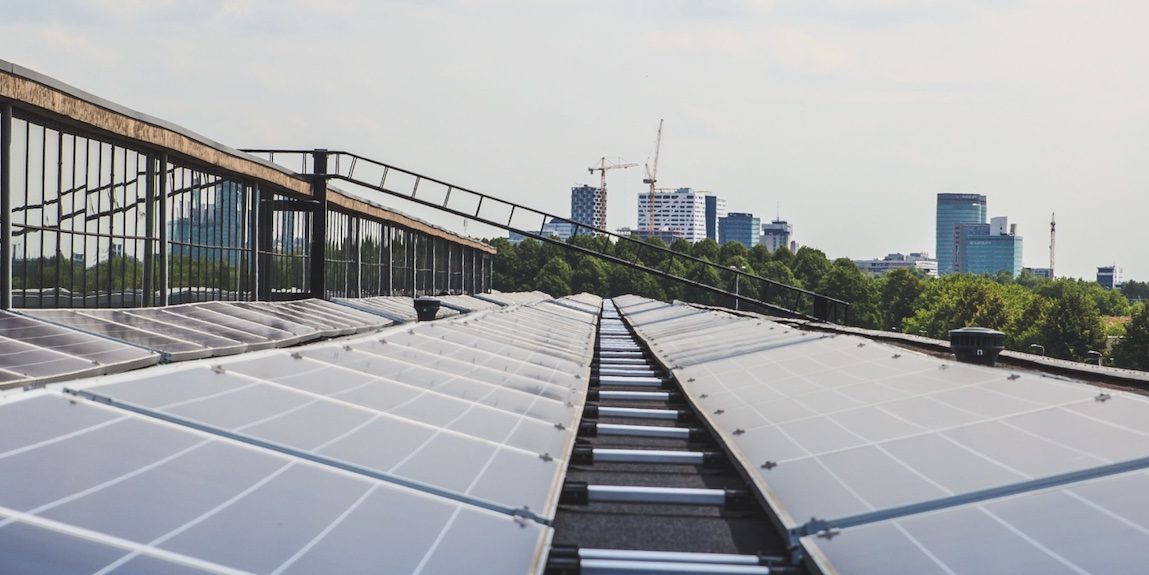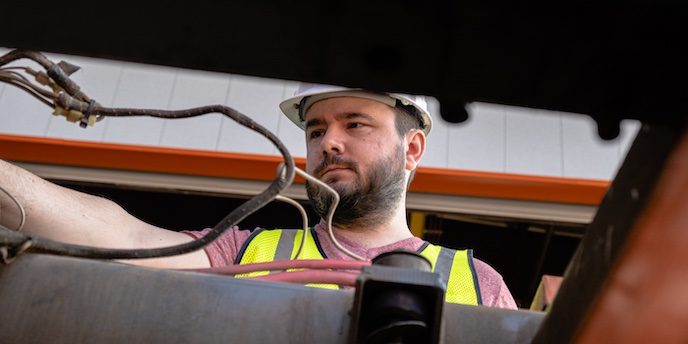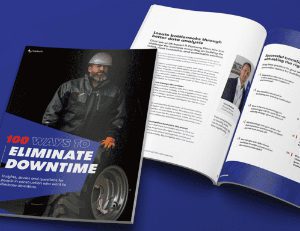

The industry is facing uncertain times with swings in consumer demand, staffing challenges, supply chain delays, inflation and rising energy costs. Making decisions within an ambiguous playing field, where leaders are challenged with problems out of their control, can feel daunting. Sustainability doesn’t have to be an additional factor on top of all this. It can be a driver to create more resilient businesses in the construction industry that can cope with this ambiguity. It can be a source of resilience that allows forward-thinking companies to come out of the downturn stronger than they went in.
No doubt, the bar is high. Pressure for more environmentally friendly operations comes not only from the market but also from governing bodies, imposing rules and regulations on emissions. Especially in the Nordic countries, we experience a strong push to drive change toward more sustainable practices on construction sites.
Reducing the carbon footprint is top of mind across the industry. Walking the exhibition halls at bauma, it’s apparent that emission and sustainability is a big theme no matter where a company sits in the construction value chain. Manitou Group is no exception as Maxime Deroch, President, Services & Solutions Division, shared in a lightning talk during the Downtime event. One area where OEMs can drive impact is by bringing more electric – and tomorrow hydrogen – machines to the market as a majority of emissions comes from burning fossil fuel. Contractors appreciate electric machines also due to lowered noise pollution, allowing them to work longer hours in residential areas.
Sustainability can be a source of resilience that allows forward-thinking companies to come out of the downturn stronger than they went in.
Electric machines come with a higher price tag and there are concerns if electric machines can keep up with their diesel-powered counterparts in terms of productivity as charging times need to be factored in. Based on data from Manitou machines the average daily usage time is 1 hour and 20 minutes. Compared to a standard 4-hour range of electric machines, that should in theory leave enough room to get the job done. This calculation is based on averages and in reality, there are fluctuations in how much machines are being used on a daily basis. It’s an indication though that electric machines aren’t necessarily a showstopper in terms of productivity. However, it does require leaning in and changing ways of operating on construction sites.
Electric machines are only one piece of the sustainability puzzle. Transportation of machines makes up a large part of indirect emissions and we need to minimize transport altogether or find more energy-efficient ways to get the right machines to the right location.
While a part of the solution is to develop new, more energy-efficient machines, the other side of the equation is to extend the lifecycles of machines already in use. In a circular economy, machines are designed to be recycled, reused, or remanufactured at the end of their first life cycle. According to Neal from asset finance partner DLL, this model promotes usage over ownership and is seen as a major trend that will likely alter the way of doing business in construction in the future.

The reduce, reuse, recycle principle is not just applicable on the machine level but also when we zoom in on machine components and consumables. Manitou, for example, has launched an initiative around cleaning and recycling oil. The goal is to find more efficient ways to change oil and to increase change intervals. This saves resources and potential costs for the end-user, especially in times of scarce field technicians resources.
While emissions and raw materials seem to be the obvious areas that construction should attack to meet sustainability and climate targets, there’s one other aspect that cannot be overlooked. Construction is not just an industry of steel, concrete, and dirt. It’s first and foremost an industry of hardworking people. Their safety and well-being are a cornerstone for building a more sustainable future.
If we can rebuild the reputation of construction as a safe place to work, we can lower entry barriers for talent to the industry and contribute to solving workforce scarcity.
Apart from the immediate effects, a safer construction industry also improves the image and reputation that it’s a dangerous place to work which still prevails. If we can rebuild the reputation of construction as a safe place to work, we can lower entry barriers for talent to the industry and contribute to solving workforce scarcity.
OEMs such as Manitou pave the way with new safety equipment on machines that protects operators with alerts and warns teams on-site through sound or light. Different data points are collected to detect for example risky driving behavior which can inform management and trigger adapted training programs.
Bauma x Downtime is part of an event series hosted by Trackunit where we invite the construction industry to ask the tough questions and discuss solutions about how we can eliminate downtime through innovation and collaboration. It’s an open invitation for anyone in construction with a drive to make a change. Sustainability is one of the themes that are discussed. Sign up to receive regular updates on activities and join the community to eliminate downtime!

Never miss an insight. We’ll email you when new articles are published on this topic.

